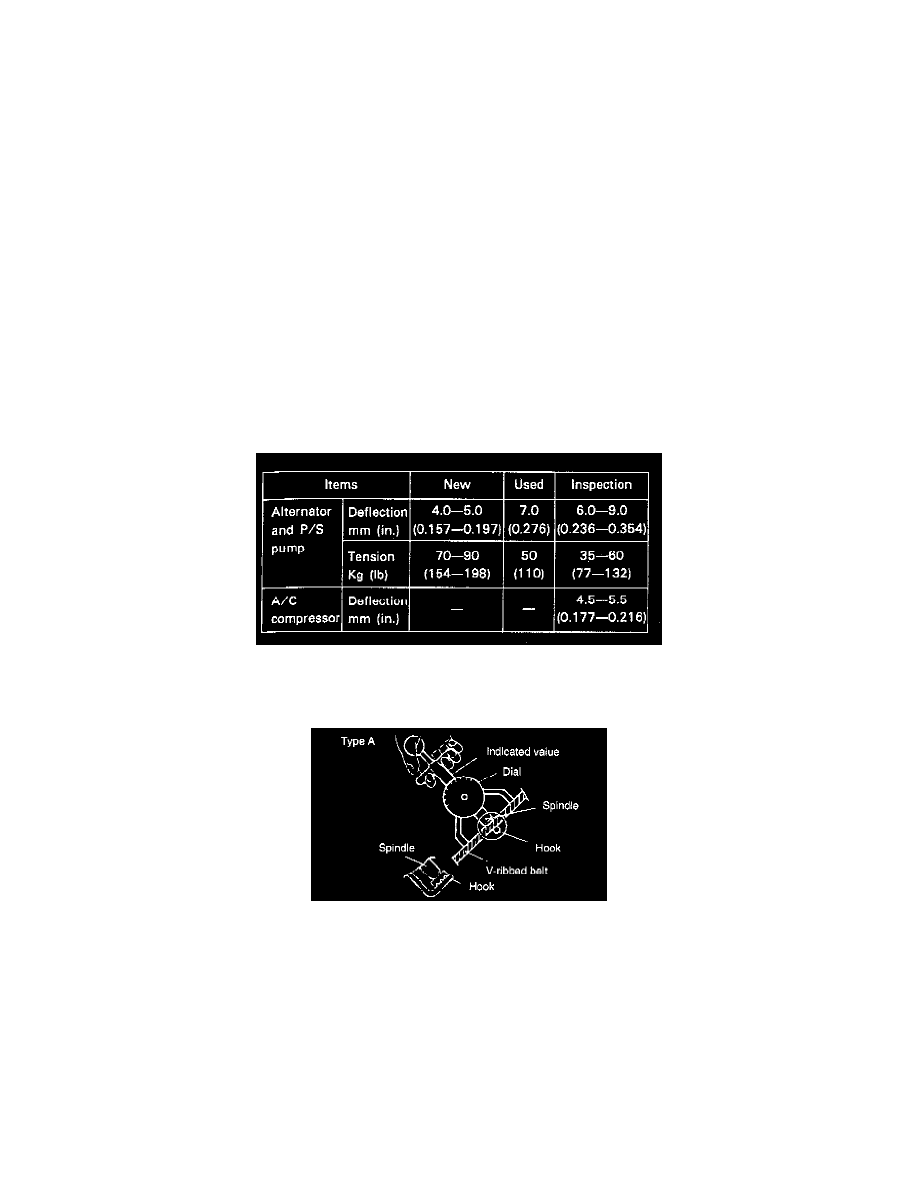Sonata GL V6-3.0L (1997)

Drive Belt: Testing and Inspection
Tension
DRIVE BELT TENSION
1. Check that the belts are not damaged and fit properly into the pulley grooves.
CAUTION: When adjusting the V-ribbed belt, check that the V-ribs are properly aligned.
NOTE:
-
If noise or slippage is detected, check the belt for wear, damage, or breakage on the pulley contact surface, and check the pulley for scoring.
-
Check for the proper belt deflection measurement.
2. Apply 100 N (22 Lbs.) force to the belt back midway between the pulleys as shown in the illustration, measure the amount of deflection with a
tension gauge.
NOTE:
-
The belt tension must be measured between the specified pulleys.
-
When a new belt is installed, adjust the tension to the center of the standard range indicated under "New." Let the engine idle for 5 minutes or
more, and check the standard value indicated under "Inspection."
-
When adjusting a used belt or a newly installed belt after 5 minutes or more of operation, refer to the standard value indicated under "Used."
-
Refer to the standard value indicated under "Inspection" for periodic inspections.
Specification Table
Belt Adjustment Specifications
Type A Tension Gauge
Do not let the dial section of the tension gauge contact other objects during measurement.
Type B Tension Gauge
